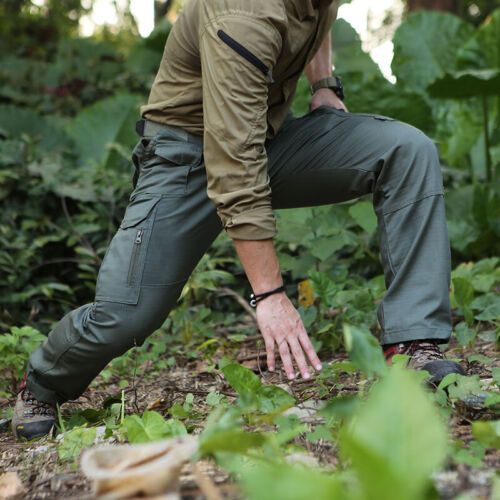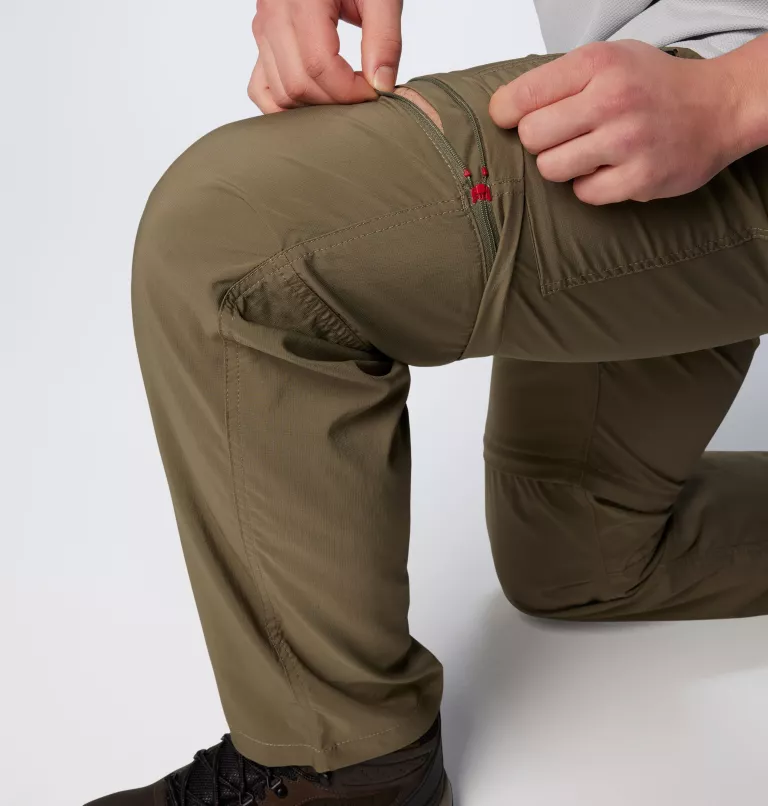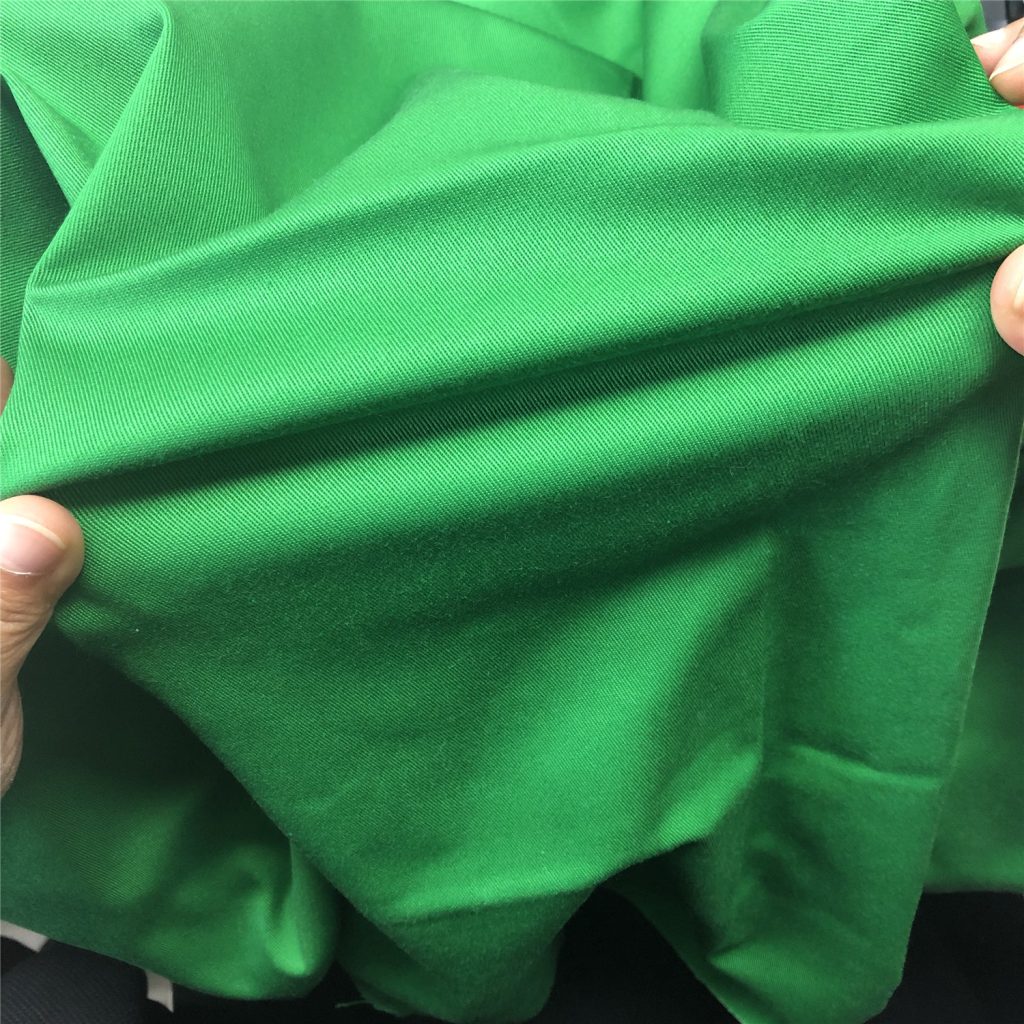What Makes a Good Fabric for Tactical Pants?
The fabric in tactical pants needs to be durable, flexible, breathable, and protective. Common fabrics include polyester-cotton blends, nylon-cotton blends, 100% cotton, canvas, ripstop, twill, and stretch materials. Many of these fabrics also have special treatments, such as water resistance or stain repellency, to enhance their functionality. Now, let’s dive into the most popular fabrics and how they perform in real-life situations.
1. Polyester and Cotton Blends: The All-Rounder
Polyester-cotton blends are a popular choice for many tactical pants and are usually a 65/35 or 40/60 ratio.
- Durability: Polyester adds durability, prevents wrinkles, and keeps the fabric looking new.
- Comfort: Cotton adds breathability and softness, which is great for all-day wear.
This blend is a good mix of comfort and durability. It’s perfect if you need a reliable pair of tactical pants that can handle everyday tasks and moderate outdoor activities without sacrificing comfort. Brands like 5.11 Tactical use this blend in their Stryke Pants, which offer a good combination of breathability, flexibility, and toughness.
2. Nylon and Cotton Blends: The Water-Resistant Option
If you need something that can handle moisture, a nylon-cotton blend might be your answer. These pants usually have a 50/50 mix of nylon and cotton.
- Water Resistance: Nylon is naturally more water-resistant than polyester, so it helps keep you dry in wet conditions.
- Breathability: The cotton makes sure you’re not sacrificing comfort for protection.
These blends are great for tactical pants worn in environments where you might encounter rain or high humidity. For example, Columbia Sportswear uses nylon-cotton blends in their Silver Ridge Convertible Pants, which are lightweight, breathable, and water-resistant—great for rainy hikes or outdoor missions.
3. 100% Cotton: The Classic Comfort
Cotton is one of the oldest and most trusted fabrics around.
- Comfort: Cotton is soft, breathable, and helps regulate your body temperature, so it’s comfortable in hot and cold conditions.
- Maintenance: While cotton feels great, it does require a little more care—it tends to shrink and wrinkle.
For casual outdoor activities or light-duty tactical needs, you can’t go wrong with cotton. However, it’s not the best choice for extreme conditions or when durability is your top priority. Carhartt’s B01 Duck Pants are a great example of cotton in action. They’re comfortable and perfect for work environments, but they may not hold up as well in tough, wet conditions.
4. Canvas: Tough and Durable
If you need something tough, canvas is your fabric. Made from cotton or cotton-synthetic blends, it’s known for its incredible strength.
- Durability: Canvas is tough as nails and won’t tear easily.
- Water Resistance: It’s not waterproof, but it can handle a lot of moisture and rough conditions.
- Stiffness: It’s a little stiffer than other fabrics, which can limit movement.
If you need maximum durability and don’t mind the stiffer feel, canvas is a solid option. Under Armour offers tactical pants made from a canvas-like fabric that’s built for durability in the harshest conditions. These pants are tough enough for military or outdoor work but may not be as flexible as other fabric options.
5. Ripstop Fabric: Tear-Resistant and Lightweight
Ripstop fabric is designed to prevent tears from spreading, thanks to its unique crosshatch pattern.
- Tear Resistance: The crosshatch design makes the fabric highly resistant to rips and tears, even under intense stress.
- Lightweight: Despite its toughness, ripstop fabric is light and breathable.
Ripstop is often used in tactical pants that need to hold up to a lot of wear and tear. The LA Police Gear Operator Pants, for example, use ripstop fabric to ensure they stay intact no matter how rough things get. They’re perfect for law enforcement or anyone in need of reliable, durable pants for high-action environments.
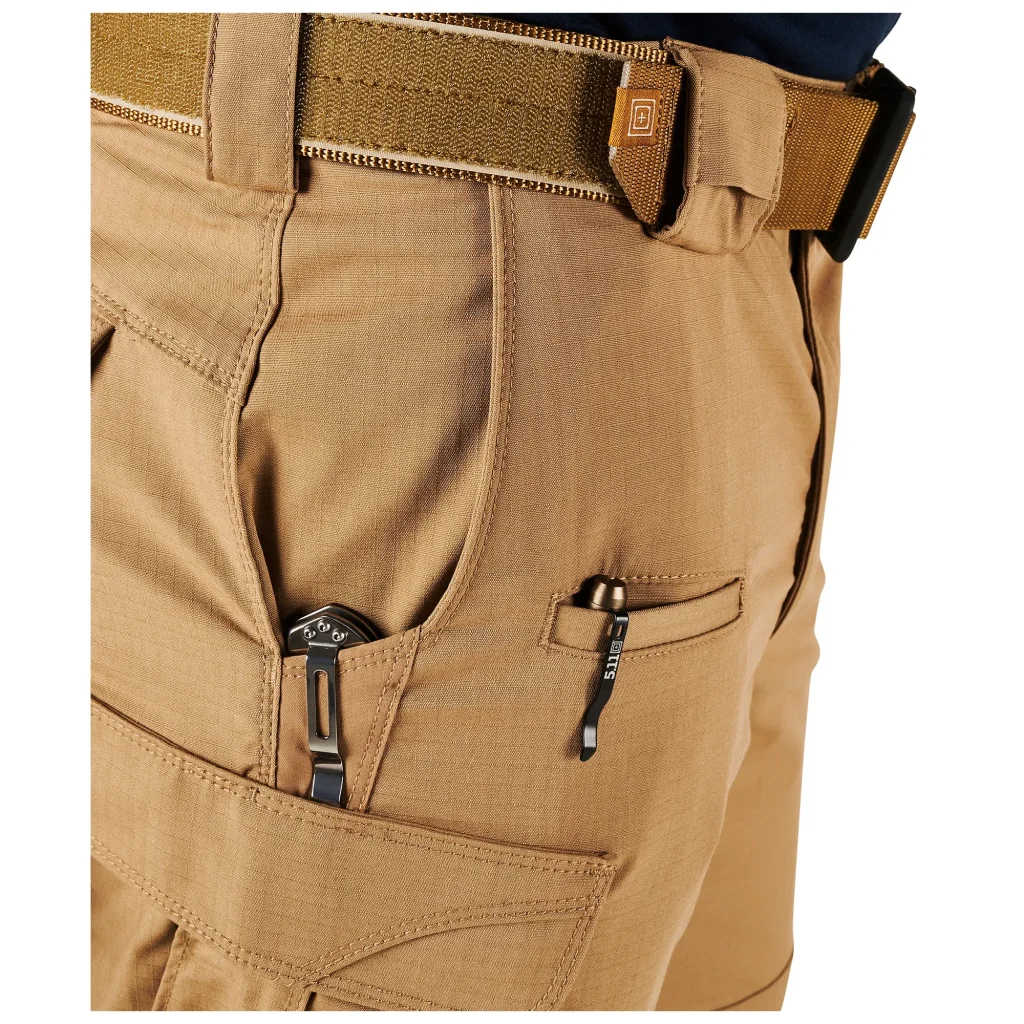
6. Twill: Strong with a Touch of Style
Twill fabric has a distinct diagonal weave, making it both strong and stylish.
- Strength: The unique weave gives twill extra durability and resistance to wear.
- Flexibility: It’s slightly softer and more flexible than canvas, which makes it comfortable for longer wear.
Twill is great for tactical pants that need to balance function with a cleaner look. The Tru-Spec 24-7 Series Tactical Pants use a twill weave, offering durability without sacrificing style or comfort. They’re perfect for professionals who need tough pants that can also look good in an office or casual setting.
7. Stretch Fabrics: Freedom to Move
Modern tactical pants often include a small percentage of spandex (about 2-3%) mixed with other fabrics like polyester-cotton or nylon-cotton blends.
- Flexibility: This slight stretch allows the pants to move with you, offering greater comfort and mobility.
- Durability: The stretch doesn’t compromise the fabric’s strength, so you still get the toughness you need.
If you need to bend, climb, or crouch a lot, these pants are a game-changer. The Columbia incorporates spandex into their Silver Ridge Utility Convertible Pants, making them perfect for adventurers and tactical professionals who require both flexibility and toughness.
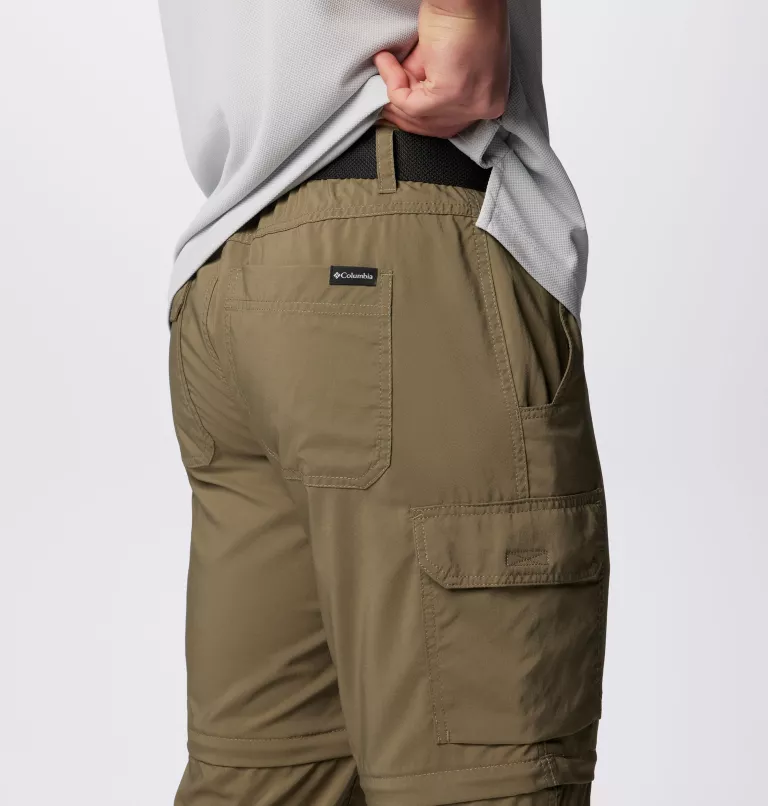
8. Additional Treatments: The Finishing Touches
In addition to the fabric, many tactical pants come with special treatments to enhance performance.
- Water-Resistant Treatments: Fabrics are coated with DWR (Durable Water Repellent) to help keep you dry.
- Stain Resistance: Teflon coatings can make the fabric repel stains and moisture, keeping your pants looking cleaner for longer.
5.11 Tactical often treats their pants with Teflon to make them more resistant to stains and water, especially in their Stryke Pants, which are built for tough environments. These added treatments can make your pants more versatile and practical for a variety of conditions.
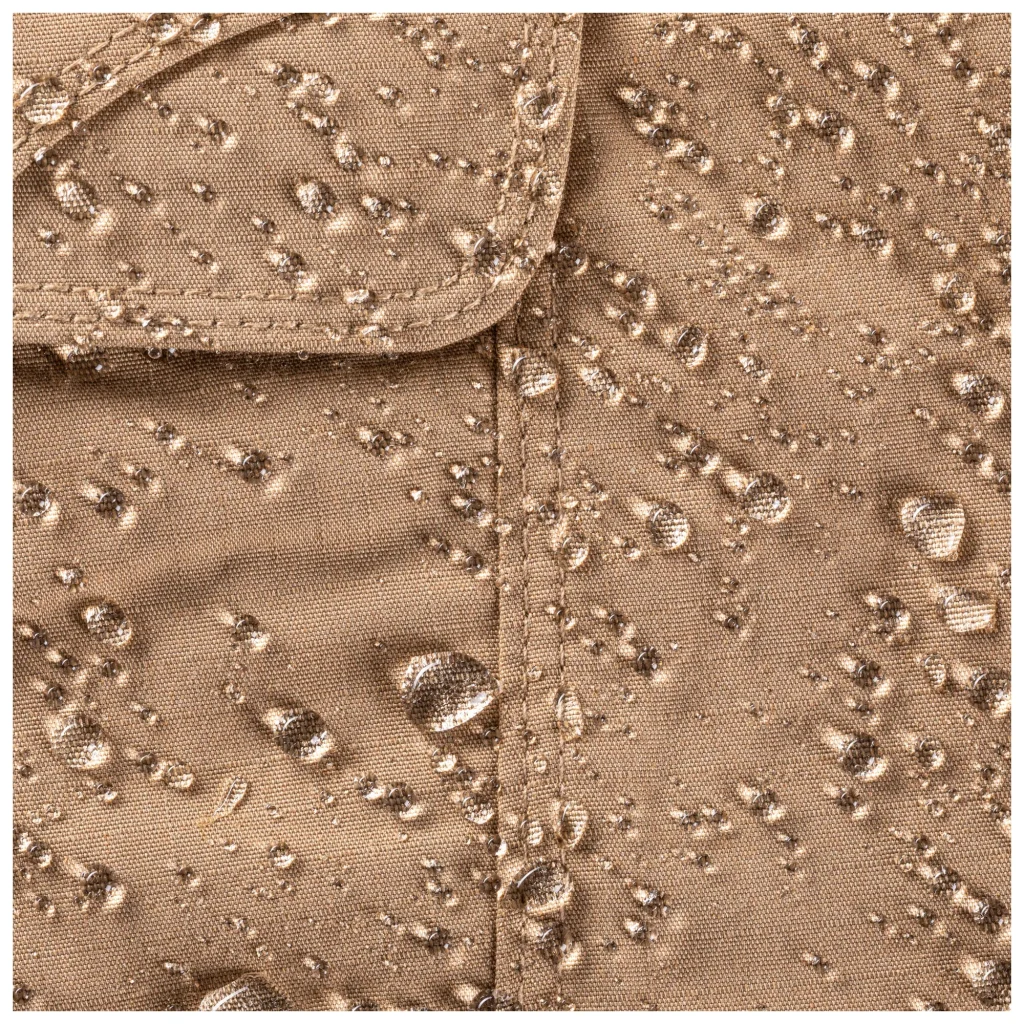
Conclusion
Choosing the right fabric for tactical pants can make a huge difference in how comfortable and effective your gear is.Whether you need something lightweight, durable, water-resistant, or flexible, there’s a fabric out there that’s perfect for your needs. From polyester-cotton blends to ripstop and modern stretch fabrics, every fabric has its place in tactical pants. If you’re a fabric buyer or brand looking for the best materials to make top-quality tactical pants, we’re here to help. Feel free to reach out and let us know how we can assist with your fabric needs.

